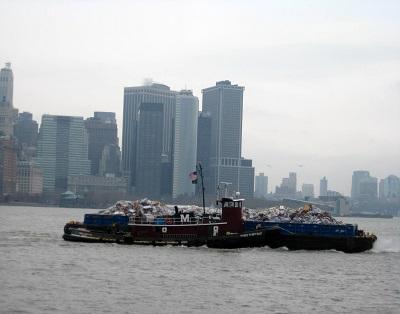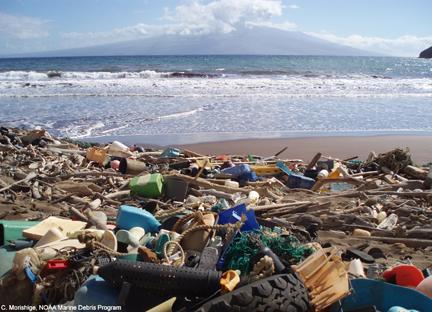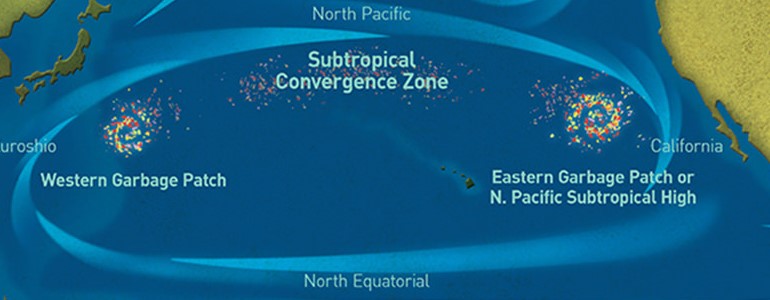19.3: Solid Waste and Marine Life
- Page ID
- 35010
Ocean dumping has also been a popular way for coastal communities to dispose of their solid wastes. In this method, large barges carry waste out to sea and dump it into the ocean (figure \(\PageIndex{a}\)). That practice is now banned in the United States due to the pollution problems it created. However, much trash escapes to the ocean through littering and illegal dumping. Additionally, wind carries trash off of overfilled containers, landfills, or open dumps (where they are still used).


Garbage patches form from waste that escapes to the ocean. Plastic breaks down into smaller pieces when exposed to sunlight and ample oxygen. These pieces of plastic are trapped in calm parts of the ocean that are surrounded by strong, circular currents (figure \(\PageIndex{b}\)). Garbage patches may not be visible from the surface of the ocean, and the plastic pieces may be up to 20 meters deep.

Plastic and other trash harms marine life in several ways. Old fishing nets and plastic six-pack rings trap wildlife. Additionally, organisms that ingest plastic risk choking. Ingested plastic may cut internal organs, limit space available for food, and carry toxins (figure \(\PageIndex{c}\)).

Interactive Element
Edible six-pack rings offer a solution to the problem of plastic six-pack rings harming wildlife. You can read more about them here.
Attribution
Melissa Ha (CC-BY-NC) and Solid Waste from AP Environmental Science by University of California College Prep (CC-BY). Download for free at CNX.


